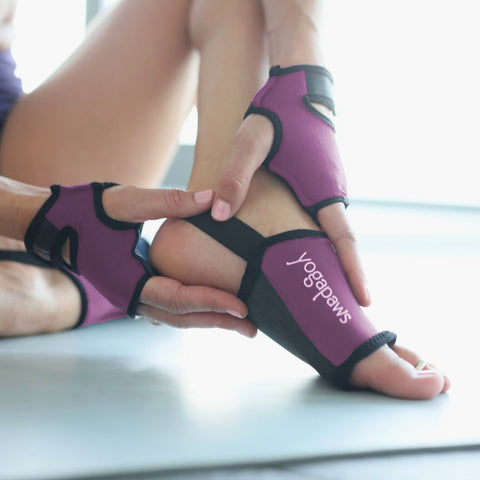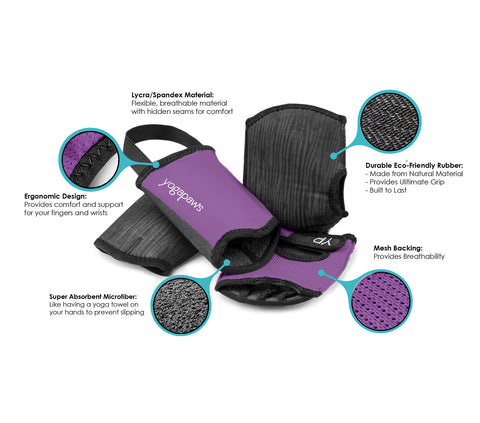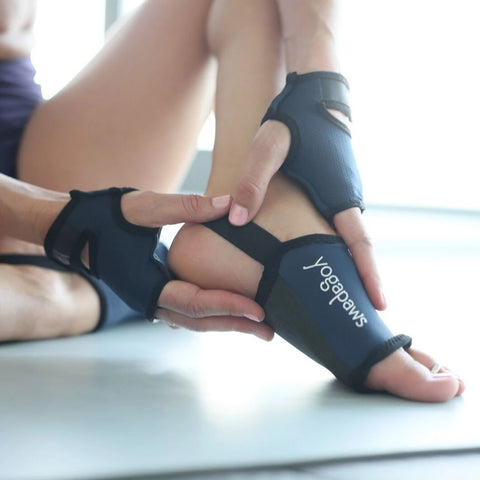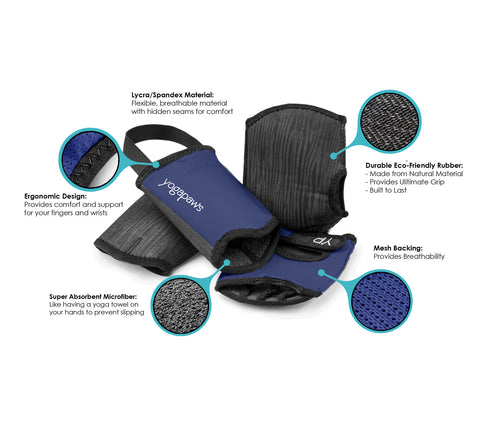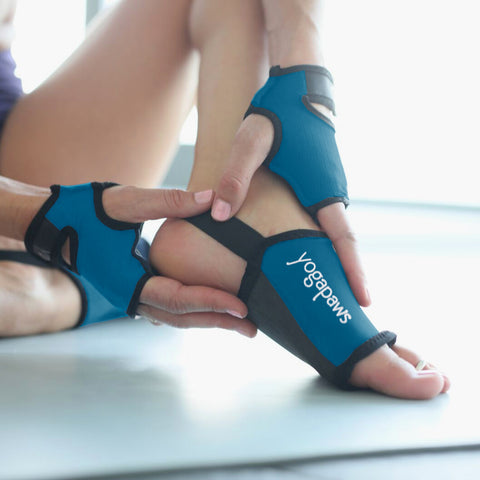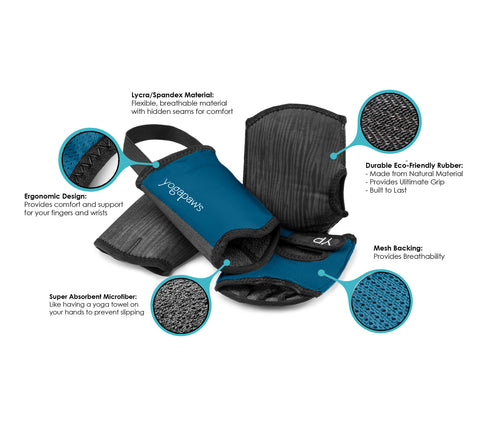Posted on January 09 2018

Do you remember the first time you ever felt sad? Scared? Anxious? Maybe you don’t, but your body might. In yogic thinking, your body is not only enmeshed with your mind and spirit; it’s a journal of your journey through life. Your tight hips may not just be a matter of genetics. Tightening down through you hip cradle may be a lifelong response to a negative situation. You close down as you try to protect yourself, to literally brace your body against the anticipated blow. Or, perhaps, your dentist just recommended a mouth guard to stop you from grinding your teeth as the stressors build up in your days. If it’s hard to open your shoulders, think about how much tension you’ve held in your upper body whenever you’re uncertain or unhappy.
Memories from your earliest years can be shaping and defining the body you’re living in today. Even when you’re not consciously aware that you’re holding back emotions, your body is spelling it out for you. If you, like so many people, have intense, unresolved emotion experiences, the muscles, bones, organs, and fascia in your body can become out of balance—tight, weak, stiff or under- or over-stimulated—in an attempt to deal with them.
Your yoga practice is one place where you can see that in action. For example, if you tend to be shy in speaking or have traumatic associations with public speaking, it might be hard for you to keep your throat long and relaxed in backbends like Ustrasana (Camel Pose). If you are insecure, core strength can be a challenge. Working on strengthening and loosening spots that are tight or weak can also help to bring those thoughts into balance.
 When it comes to deeply ingrained or buried issues, your yoga practice takes on a different, powerful role. AsYoga Journal points it, yoga’s message of understanding and acceptance can sometimes trigger an unexpected flood of emotions. Maybe you head into a heart-opening pose only to find yourself in tears, or maybe a challenging sequence leaves you especially irritable.
When it comes to deeply ingrained or buried issues, your yoga practice takes on a different, powerful role. AsYoga Journal points it, yoga’s message of understanding and acceptance can sometimes trigger an unexpected flood of emotions. Maybe you head into a heart-opening pose only to find yourself in tears, or maybe a challenging sequence leaves you especially irritable.
While those emotions aren’t always a pleasant catharsis, they are often your body’s way of telling you that you can—and are able to—address the root causes. They break down the barriers between the stiff-upper-lip denial of how your really feel and put you face-to-face with emotions that are real, relevant and necessary to acknowledge.
Most yoga teachers agree, and according to Yoga Journal, that you shouldn’t try to stir up emotions on the mat, but that doing so can be a natural part of your yoga experience. What is important is that if they occur, you don’t try to hold them back or over-analyze them. In the moment, register the sensation for what it is. Ask yourself what you feel. Accept the validity of that feeling. Later, in or out of class, you can try to find the deepest causes. Maybe opening your physical heart reminded you of someone you miss, or maybe you feel edgy because you feel like your strength isn’t being fully utilized. Whatever truths you uncover, let them come to you. Don’t judge your feelings, or yourself.
Here are some poses to make it easier to let your body speak to you.
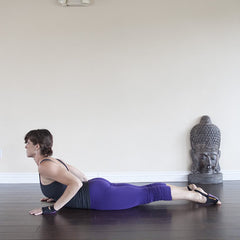 |
Bhujangasana (Cobra Pose) Benefits: This heart-opening pose helps you access your creative and emotional sides. How to do it: Start lying face down on your mat. Place your hands on the floor close to your body and about even with your shoulders. Focus on allowing the fronts of your thighs and the tops of your feet to sink into the mat. On an inhale, press into your hands to lift your torso off the floor. Straighten your arms as far as you can without straining your lower back. Think about elongating your front page and not “hinging” in your low spine to contract it. Keep your neck long and your breath even. Hold for 15 to 30 seconds, then release. |
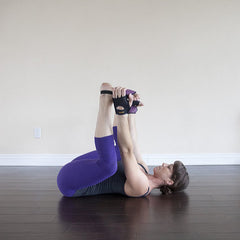 |
Ananda Balasana (Happy Baby Pose) Benefits: This gentle hip opener is a great way to help release emotional tension about long-ago or deep issues. How to do it: Lie on your back on the mat. Exhale and pull your knees in toward your chest. On an inhale, clasp your hands around the outside of each foot. Make sure your legs form a right angle, with your ankles perpendicular to your knees. Pull your feet toward your torso. As you push your hands down, gently resist by press your feet toward the ceiling. When you reach the deepest stretch that’s comfortable for you, stay there for 30 seconds to one minute and release. For added fun, gently rock from side to side on your back or bend and stretch your legs lightly. |
 |
High Lunge—Variation Benefits: This pose can help remind you of your physical and mental strength, making you feel empowered to open up to your emotions. How to do it: Start in Adho Mukha Svansana (Downward-Facing Dog Pose). Bring your right foot between your hands. On an inhale, bring your body up. Brush your arms out to the sides and then up toward the ceiling, arms along your ears and palms facing each other. Hold for 30 seconds to one minute, being careful not to let your back arch. Then, release from the pose by placing your torso back on your leg and returning to Adho Mukha Svanasana before repeating on the left side |
Customize. As Yoga Journal recommends, what helps you release is unique to your needs. It can be as simple as finding a practice that feels opening to you. Or, you can use the chakra system or another metaphysical concept to help you target specific areas in your life you want to open up.
Don’t be afraid to ask for help. Sometimes, introspection is the best way to get to the root of a problem. But, if you’re drowning in the flood of emotions that your yoga practice releases, asking for outside help in sorting through it is a good idea. Whether it’s your family, a best friend, your yoga teacher or a therapist (holistic or allopathic), the sounding board and support another person can offer is a powerful tool to help you cut through self-imposed limitations and see a bigger picture. If you don’t do well with “advice,” look for an alternative like the Spiritual Companioning program offered by Cincinnati Yoga School (your mentor doesn’t tell you what to do, but keeps asking questions until you find the answer), Phoenix Rising Yoga Therapy and similar approaches.
Yoga is a wonderful way to open yourself up to not only difficult emotions but joyous ones. If you have had some cathartic sessions on the mat lately, dedicate your next practice to one happy thing—a person, place or activity you enjoy—and make the practice about deepening the joy that brings you. Then, in the moment, remember that feeling as a magnifying glass for your happiness.



